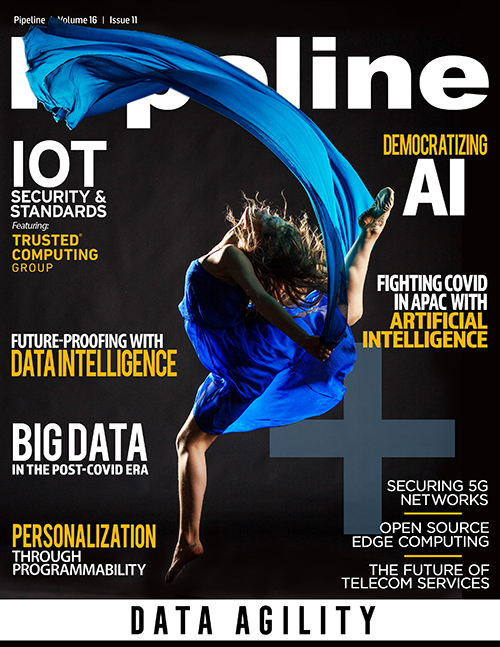Personalization through Programmability
By: Travis Ewert, Tim Nice

Within the networking industry today, the confluence of open networking, software-defined control automation, and
analytics-driven management has resulted in many definitions of what we all refer to as ‘Programmable Networking.’ You will see versions of this across service providers and suppliers showing up
as Intelligent Networking, Adaptive Networking, SW-Driven, Intent Based Networking, Control and Feedback Loop, and on and on.
What these all have in common is agility and the ability to act quickly, easily, and with speed. Although all of this verbiage is common in root definition and intent, there is not consistency in describing what this means to the user and overall experience and value created for them.
The ultimate business driver should be that of Customer Experience (CX) and how all of these advanced networking paradigms can
be leveraged to provide the ultimate CX. More specifically, allowing the network operator to be able to custom-define the experience (for themselves, their end customers, their partners, and
so on). Enter the Customer Defined Experience (CDX)™, which is the enabler for the customer to truly personalize their experience to their unique network and customer needs. When the customer can
define inputs, business rules, and outcomes for their network, services, and corresponding automation, a truly differentiated CX can be delivered.
Customer Defined Experience
A Customer Defined Experience brings together and enables the unique needs of the customer, and the technical aspects to meet those needs. It matches these to the expectations of the customer in a simple and seamless way. Similar to today’s smartphone, an individual user decides what apps they need, how they are organized and used, what notifications are enabled, and much more.
There are some distinct challenges to overcome when creating a personalized experience around automation. The first challenge is to build a strategic awareness that this personalization will be required for the employees of network operators along with the option to extend it to their end customers. The second challenge is to settle upon core features and how the customer would effectively use them. Lastly, it is important to deliver on these uniquely personal expectations in a way that can be componentized and scale for today’s digital transformation initiatives.
Going back to the smartphone example, CDX addresses this with a simple approach. Core features (network automation apps) should work right out of the box, be simple and intuitive, and provide a layer of customization to serve the needs of the user. Essentially this gives the right level of control to the right people at the right time, which is needed in order to create the ideal experience. See Figure 1 on CDX.
 Customer – Always start with the customer.
This is more than a guiding principle and applies to all of these coined terms (CX, DX, UX). In our complex world of network hardware and software, the human factor is still critical to making
good business decisions. It is important to remember who is using the tool, what their specific needs are, and how you can maximize the value you provide for them.
Customer – Always start with the customer.
This is more than a guiding principle and applies to all of these coined terms (CX, DX, UX). In our complex world of network hardware and software, the human factor is still critical to making
good business decisions. It is important to remember who is using the tool, what their specific needs are, and how you can maximize the value you provide for them.
Defined – Every network is different, and every customer is different, so your platform should be flexible enough to fit the unique demands. An on-demand and personalized platform to suit the specific needs of the individual user roles and network is critical (as programmed by the customer or user). Most of us are used to living in a data-rich world but getting through the noise and understanding what data is important and getting this at the right level of detail to the right person can seem next to impossible. Most off-the-shelf solutions aren’t flexible enough, and we know that



















